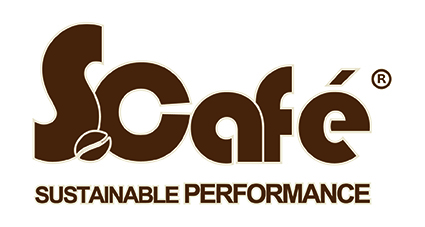
Fishing nets, coffee grounds, PET bottles
Material made from ocean pollution
Polyamide from fishing nets: abandoned fishing nets that are floating freely in our seas are turned into high quality clothing. Now that’s something for Mother Nature to be happy about!
The WWF views the issue of plastic in our oceans as one of the most threatening environmental problems of our times. Plastic garbage pollutes our waters, sets toxins free and threatens maritime plants and animals. Ghost nets are doing a great deal of harm in the world’s oceans and dolphins and whales can get caught in them.
From fish catcher to eye catcher
Our suppliers for polyamide fabrics are working with their partners - including the WWF - collect nets from our seas and recycle them into new, high quality materials. Other polyamide products such as carpets are recycled as well.
The preparation of the fishing nets – including cleaning, chemical depolymerization and repolymerization processes take place in Europe. Thus new polyamide yarn is created from pollution – with the same chemical qualities and the same functionality as polyamide made from petroleum.
Pollution is cleaned up while crude oil, energy and emissions are conserved. Concrete figures, photos and films are available at www.econyl.com.
From bottles to bags: PET recycling
Another source material for recycling at VAUDE is used PET bottles. These are collected, purified, ground and processed to form granulate that is then melted and spun into yarn.
This recycling does double duty: from the 50 million tons of plastics produced in Europe per year, almost half of this is for packaging that ends up in a landfill within a year. PET bottles and other packaging make up a large portion of this. Ecologically, it makes absolute sense to reduce these mountains of plastic.
In the process, high-quality polyester is produced, which in its manufacturing requires 50% less energy and produces approx. 50% less CO2 emissions. Absolutely no fossil fuel petroleum is required.

|
The Recycling Cycle
Collect, clean, granulate and spin: the recycling cycle of PET bottles. Water-shedding products such as bags and backpacks are made with the fiber resulting from this cycle. |
Green Shape PET Recycling - Movie:
Our coffee to go

One of our favorite materials is s.Café® recycled polyester. This material involves a spin mass made from recycled, melted polyester granulate that is mixed with used coffee grounds.
The material is partially biobased, fast-drying with UV protection, and has an antibacterial effect, which prevents odors and allows us to eliminate the use of chemical anti-odor finishes. This is a great thing and it is why we are using this material in T-shirts, jackets, fleece products and seat pads for bike shorts.
Used clothing as a raw material: Fully functional. Duly delightful.
Used textiles can also be recycled. For the manufacturing of this high performance material, residual materials from the manufacturing of polyester are collected rather than thrown out and then fed back into the production cycle. This conserves resources and offers full functionality.
During the process, the different polymers that make up the synthetic fiber are recovered and re-assembled.
A granulate is then produced that can be spun into yarn and woven into fabric. This reduces landfill waste because instead of throwing used textiles in the trash, they are recycled. There is also no additional need for petroleum in the reclamation of polymers.
Increasing percentage of the Collection

VAUDE would like to continue to advance the use of recycled materials.
The criteria for recycled VAUDE Green Shape products is between at least 30% recycled percentage on the finished product (for shoes) up to at least 90% (for apparel).
These limits are very high. For VAUDE products that are made with a lower percentage of recycled materials and therefore don’t meet the Green Shape criteria, we have introduced a new label in the Summer Collection 2016 that identifies products made from at least 30% recycled materials.
We want to enable our customers to better identify recycled products so that they can make informed decisions about their purchases.
Percent of products made from recycled materials
Create your own infographicsNotes on this graphic:
- “Total” refers to all backpacks, bags and bike bags from the product areas Mountain Sports, Bike Sports and Packs ’n Bags.
- “Packs ’n Bags” has been identified separately as the percentage of integrated recycled materials is especially high in this product segment.
- The following applies to all products: the percentage of all integrated primary materials made from recycled materials is at least 30%. When the percentage of integrated recycled materials is significantly higher, the products have the VAUDE Green Shape label. This representation differentiates based on the percentage of recycled materials, but not whether or not the product has Green Shape status. Green Shape concerns very different sustainability criteria. Read more here
Certified Recycled Materials
All recycled materials used by VAUDE meet the following standards:
| GRI: | G4-EN2 |






